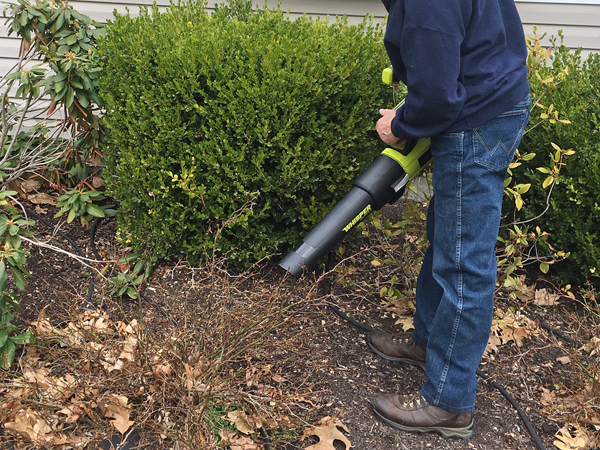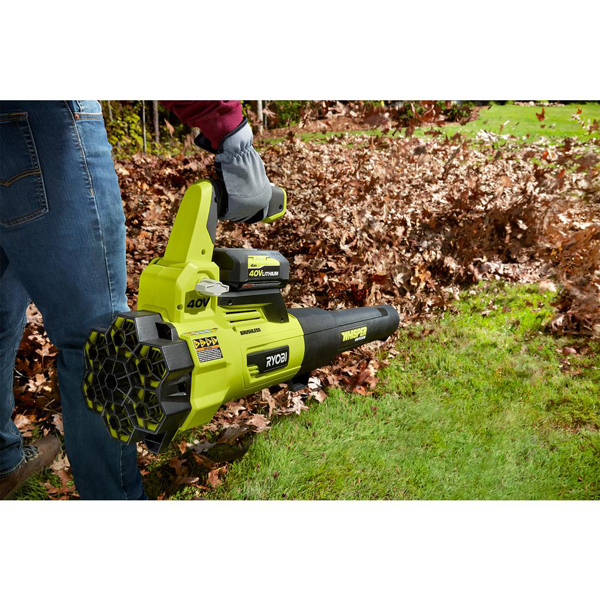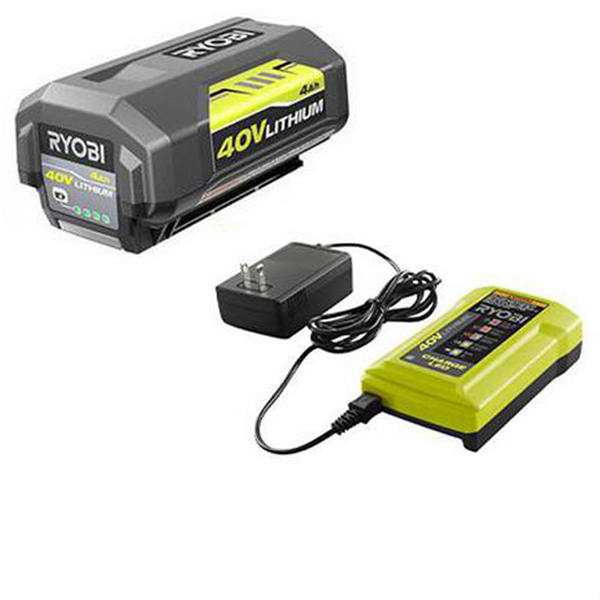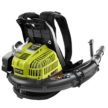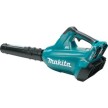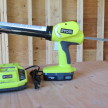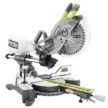RYOBI 40 Volt Leaf Blower
RYOBI 550CFM/125MPH Leaf Blower RY40407VNM Review
By Ralf Mroz
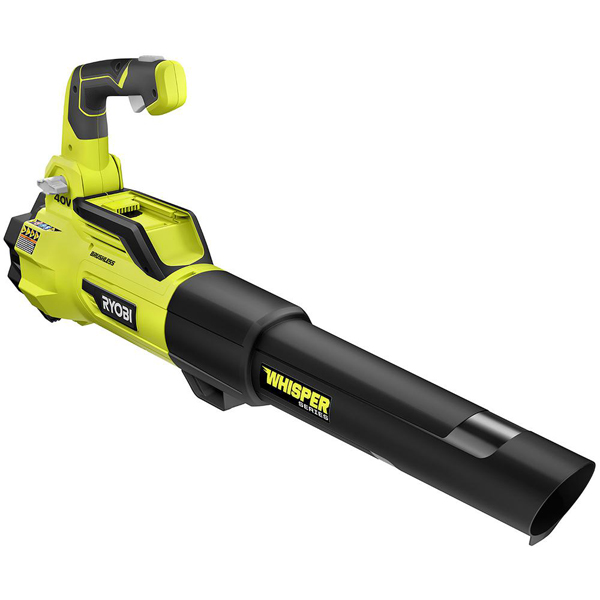 It’s hard to say which battery-operated tool has made the biggest difference on the Jobsite, in landscaping, or just home maintenance, but certainly, the blower is welcome and well-used. On the Jobsite it’s used for general clean-up, to blow sawdust out of table saws, to move materials around, and a thousand other tasks. Of course, it’s one of the landscaper’s primary tools. In fact, every trade and every sub-trade uses a blower in different ways, but there’s always one on the Jobsite, the shop, and in most residential garages, and it gets regular use.
It’s hard to say which battery-operated tool has made the biggest difference on the Jobsite, in landscaping, or just home maintenance, but certainly, the blower is welcome and well-used. On the Jobsite it’s used for general clean-up, to blow sawdust out of table saws, to move materials around, and a thousand other tasks. Of course, it’s one of the landscaper’s primary tools. In fact, every trade and every sub-trade uses a blower in different ways, but there’s always one on the Jobsite, the shop, and in most residential garages, and it gets regular use.
Blower Performance
The primary determinants of blower performance are the amount of air it moves, measured in cubic feet per minute (CFM), and the speed of the moving air, measured in MPH at the tip of the blower tube. Performance on any specific task results from the interplay of the two. Of the two, CFM is the primary spec because the airspeed can be increased or decreased by making the opening of the blower tube larger (to lower speed) or smaller (to increase speed).
Think of it like a river: obviously the river has to move a set volume of water (usually measured in cubic feet per second, or CFS) at a constant rate along the entire river, or else it would back up. So where the river is wide the water flows more slowly, and where the river is narrow it flows faster.
New RYOBI Leaf Blower 40407
I’ve been using the 18-volt 200CFM/150 MPH RYOBI P2107 for the last several years in the shop and around the house. It does a fine job of moving material along smooth floors and surfaces like the back of a truck. But once those materials (sawdust, leaves, shavings, etc.) hit a rough surface like dirt, grass, or asphalt, I find myself wishing for more oomph. I have a powerful corded blower…which I haven’t used in years because it’s just too much of a hassle to use and operate. So I was happy to take a look at the new 40-volt 550CFM/125 MPH RYOBI 40407 blower, which is new this spring. (The bare tool is model; it comes packaged with a 4 Ah battery and charger, and the kit is model RY40470VNM. It’s also available with two 4 Ah batteries as kit RY40470VNM-2B.)
RYOBI Leaf Blower Features
- Brushless motor
- Industry’s quietest handheld blower (59dB)
- Gas-like power
- Turbo button for maximum power
- Variable speed trigger for air control
- Jet fan design for increased airflow
- 550 CFM, 125 MPH on turbo
- 460 CFM, 110 MPH on high
- Compatible with all RYOBI 40-Volt tools, batteries, and chargers
- The blower is backed by a 5-year limited warranty
- Bare Tool: 9 lbs
- Adjustable angle handle
RYOBI Leaf Blower 40407’s Performance
It does indeed provide gas-like performance. It arrived in the early spring here in New England, so I couldn’t do my fall clean-up with it, and there were too few leaves left on the lawn for their clean-up to mean much. But I had a tougher task to try. Outback of our property is a trail that’s used all winter long by hikers, skiers, snowmobiles, and four-wheelers. The leaves and pine needles under the winter snow get compacted and remain wet well into the spring. In other words, they are densely packed. Applying the 40407 to a patch of this trail for only a second — on high, not even turbo — cleared the trail down to bare dirt easily. Easily. Mamma Mia, that’s somma speecy spicy power (to mangle the classic 1969 Alka-Seltzer commercial) in a battery-powered blower.
The blower also cleared winter-packed leaves out from under thorny rose bushes with ease and moved wet hemlock needles off rough asphalt effortlessly — all without resorting to turbo mode. Finally it managed, albeit in fits and starts, to push a brick along a smooth driveway floor. So yeah, I got the extra oomph that I was looking for.
Ergonomics
The 40407 isn’t a compact blower; it’s what I’d call “normal” size for a powerful blower. The bare tool weighs 9 pounds, and the 40-volt, 4Ah battery probably adds another one to two pounds. So while the unit isn’t light, it isn’t heavy either, and the design of the angle-adjustable handle means that it’s not only well balanced but can be configured to your likes and the job at hand. The only thing that’s missing, in my opinion, is a handle for your other hand. You can grasp the bottom of the battery with your off-hand, and while that works reasonably well, it doesn’t provide quite the leverage and assist that a well-placed second handle would. On the other hand, this is not likely to be a tool that a tradesperson will use for hours on end.
As advertised, this blower is quiet. Not silent, of course, but quiet enough that you don’t feel the need for ear pro. The air volume is nicely controlled by the trigger, allowing for easy one-hand operation.
The kit forms of this blower come with, in addition to one or two 4Ah batteries, a small charger. If you’re using the blower heavily the charge time for the battery will likely be close to your run time. In that case, you’ll either want two batteries or a larger one, or the RYOBI rapid-charge 40-volt charger.
 Recommended for DIY-er
Recommended for DIY-er
This is not a tool for professional landscapers who often run their blowers for several hours a day; they rely on gas-powered backpack blowers for that. But it is a powerful battery-powered blower for most tradespeople who use a blower for job site clean-up and occasional other tasks on the job site. Its gas-like power will easily move any material that you could reasonably expect a blower to move, along any job site surface. As much as I reach for my smaller, and less powerful, RYOBI P2107 for the small jobs that come up around the house and shop, I want the powerful 40407 on a job site.







